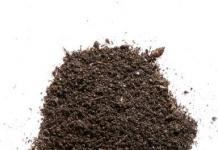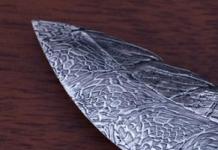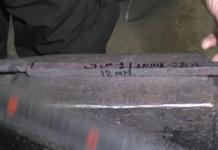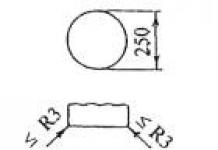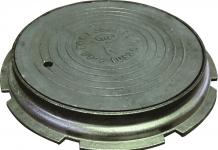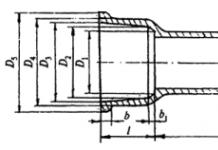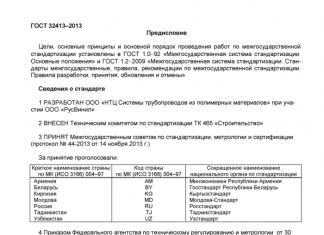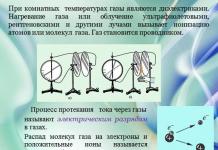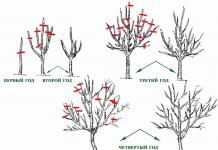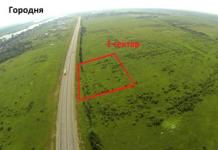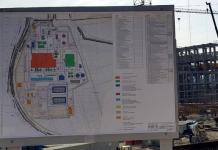Onions (Allium cepa) belong to the Allium family (Alliaceae), onions are a perennial herbaceous plant. In the conditions of the Non-Black Earth Zone, onion seeds, as a rule, are obtained only in the third year.
The bulb consists of a shortened stem - the bottom, on which buds are laid, covered with open and closed juicy scales. Open scales are thickened bases of leaves, and closed scales are modified leaves that cover and nourish the buds. The outside of the bulb is covered with dry scales of yellow, white or purple color. From the buds developing on the bottom, either new bulbs (from vegetative buds) or peduncles-arrows with inflorescences (from generative - flower buds) are subsequently formed. Depending on the number of vegetative buds, the bulb may have few or many buds. Rudimentality is one of the varietal characteristics of onions.
The leaves of onions are tubular and covered with a waxy coating. The base of the leaf covers the bud and the section of the stem on which it developed. Each newly growing leaf passes inside the base enclosing it and emerges from it at a certain height, supporting the false stem created by the leaf sheaths. When the bulb ripens, the green assimilating part of the leaf dies off. Along with the green leaves, the sheaths also die; drying out, they create a dense, thin “neck” of the bulb. A well-dried neck, closing, protects the bulb from the penetration of pathogens into it; Such bulbs are well preserved. An unripe bulb is distinguished by a thick neck.
The root system of onions is poorly developed. The roots are string-shaped at first, give branches of the first and second orders, and are densely covered with root hairs. The bulk of the roots are located in a soil layer of 5–20 cm. In an annual bulb, the entire outer part of the bottom of the stem is covered with roots. When the leaves die, the roots also die. When a bulb is planted in the ground in its second year, new roots grow around the remnants of last year's roots. In the very center of the bottom, a dead, as if lignified layer is formed - the so-called “heel”, by which an onion grown from seeds can be easily distinguished from an onion grown from a set or selection. In onion plants that form not one, but two or several bulbs, new roots are subsequently laid only on one side, the heel remains on the side, so that the bulbs are not damaged when separating them from the nest.
The peduncle of an onion is an arrow, which, like the leaf, is hollow inside, with a characteristic swelling at 1/3 of its height, and bears a spherical inflorescence - an umbrella of a large number of flowers - 200 - 800 or more. The buds in the inflorescence consist of three tiers. The buds of the first tier bloom first - these are the earliest flowers, from which the most mature seeds are formed. As the previous tier fades, the pedicels of the next tier, which is located below, lengthen, and the blossoming buds always end up on the flowering surface. The duration of flowering of the umbrella depends on climatic conditions and characteristics of the variety and can last 20 - 45 days or more.
The fruit of the onion is a triangular capsule. When fully fertilized, six seeds are formed. The seeds are small, black, rounded-triangular in shape with a dense horn-like shell. There are 250 – 400 seeds in 1 g. Under normal storage conditions, their viability lasts 2–3 years.
The dense shell of the seeds does not allow water to pass through well, so without preliminary preparation of the seeds, they germinate slowly. A sufficient amount of moisture is required for seeds to swell. When sowing onions at the optimal time in spring in open ground, seedlings appear on the 14th – 20th day.
Relation to temperature.
Onions are a relatively cold-resistant plant. It easily tolerates spring cold, but in the loop phase the seedlings can die at temperatures of minus 2 - 3ºС. The optimal temperature for leaf growth is 15 – 25ºС; they can withstand frosts down to – 7ºС and heat – over 35ºС.
The seedlings have the form of a loop, which is formed by the cotyledon and subcotyledon. After 3–4 days, due to the growth of the subcotyledon and the tension created at the same time, the cotyledon leaf comes to the surface of the soil along with the seed coat. If the soil is crusty during this period, the tension is not enough. In this case, the lower part of the plant, the root, is brought up. Such plants die.
At first, plants develop very slowly. During this period, they need a sufficient amount of moisture, nutrients and light. The first true leaf of plants is formed 7 - 8 days after germination, subsequent ones - every 5 - 7 days. With the appearance of the first true leaf, the cotyledon leaf dies, so the crops during this period look yellowed. This is a natural phenomenon that should not be scary.
Under unfavorable conditions (drought, lack of nutrients in the soil, crust formation, overgrowing of crops with weeds), leaf growth stops and bulb formation begins. A small bulb can form even if there are two or three true leaves, then the plant goes into a dormant state. If a plant has stopped leaf formation and the formation of a bulb has begun, it is impossible to stop this process by any agrotechnical methods - it is irreversible. Therefore, violation of agricultural technology, especially in the first 70–80 days of onion growth, can lead to large crop losses.
To form a large bulb, the plant must have a certain number of leaves. Depending on the variety, conditions and growing zone, from 4 to 25 leaves are formed. The process of leaf formation and the beginning of the outflow of plastic substances into the bulb is greatly influenced by light.
Light requirements.
Onions are a long-day plant. Northern varieties and varieties of the middle zone require a longer day length for their development (15 - 17 hours) than in the southern regions of the country, where the bulb is formed with a day length of 13 - 14 hours. If sowing is late, the time of formation of the bulb shifts to a shorter day, as a result, the growing season of the onion is extended, the bulbs do not ripen for a long time or are not formed at all.
Onion plants also require high light intensity, especially when grown from seeds. Low lighting inhibits bulb formation. Overgrowing of crops with weeds will slow down the development of plants. As a result, the bulbs either do not form at all or turn out to be immature, with a thick neck, unsuitable for storage.
Soil moisture requirements.
The structure of onion leaves indicates the plants’ adaptability to atmospheric drought, and the weak development of roots indicates the high demands of onions for water. The greatest need for water on onions is observed in the first half of the growing season (40 days), during the growth of leaves and the beginning of the formation of the bulb. A poorly developed root system can meet the need for water only if its content in the soil is high, so onions suffer from drought more than other vegetable plants in the first period. The optimal soil moisture for onions in the initial growth period is 80 - 85% HB. This level of soil moisture is maintained by irrigation. During growth, onions do not respond to changes in moisture. After growth stops and they begin to die, excess moisture is harmful: the transition of the onion to a dormant state is delayed, and the ripening of the bulbs slows down. Secondary roots are formed, which impairs shelf life.
Requirements for soil and nutrients.
Onions grow well on fertile and cultivated soils with a neutral reaction (pH 6.5 - 7.0), but are sensitive to increased concentrations of soil solution and respond well to decomposed (rotted) organic (manure, composts) and mineral fertilizers. The consumption of nutrients when sowing seeds occurs much more slowly and in smaller (5-7 times) quantities than when planting with sets. When sowing seeds, the bulbs begin to grow after about 2 months. after germination; by this time, plants consume 7–12% of the total amount of elements during the growing season. The maximum need for nutrients when sowing with seeds in May is observed in August, and when planting with sets - a month earlier.
Onion seed plants use nutrients more intensively and already 40 days after planting they consume up to 30% of nitrogen and potassium and up to 20% of phosphorus, and after another month, respectively, 50, 70 and 60% of the total content of these elements in the crop.
Pre-sowing application of 30 t/ha of rotted manure (compost) or 20 t/ha of humus in combination with lime and optimal doses of minerals and possible (taking into account diagnostics) fertilizing with nitrogen and potassium fertilizers before the start of intensive consumption of elements are the main methods of rational fertilization of onions for different goals.
Onion (Allium cepa) is a biennial plant with a weak root system and a well-defined bulb. Onion plants are not as clearly divided into roots, stems and leaves as is observed in other garden crops. The lower parts of the leaves are tubular sheaths from which false stems are formed, and when thickened, bulbs.
Root system. Onions are considered plants with a weak root system, which determines their increased demands on soil conditions, especially in the first stages of development from seeds. Species such as onions, which form true bulbs, have a fibrous root system that does not penetrate deeply into the soil and is weakly branched. The roots of these species are annual and die off simultaneously with the end of the growing season of the above-ground organs.
The structure of the stem. The stem of the onion is greatly shortened and is called the bottom. One or more buds (buds) develop at the bottom, which are surrounded by leaf sheaths. In vegetatively propagated plants (propagated using plant parts rather than seeds) the lower part of the bottom - the remainder of the bottom of the mother bulb - is called the heel. The dead tissue of the heel is very dense and hard and prevents moisture from reaching the bottom, protecting the bulb from premature root regrowth. Bulbs grown from seeds do not have a heel. A certain number of buds, or rudiments, are formed on the bottom, which is called primordia, and the property of forming a different number of bulbs on one bottom from the rudiments is nestedness.
Leaf structure. Onion leaves can be tubular or fist-shaped, hollow inside or flat, of various shapes and sizes. For example, the leaves of onions are fist-shaped, those of garlic are flat and linear, tapering towards the end without a cavity, and those of wild garlic are also flat, but lanceolate and wide. The cotyledon and the first true leaves of all types of onions are fistulous.
Cross section of a leaf (top) and peduncle (bottom) of different types of onion.
The color of the leaves varies from light green to dark green, even bluish. Typically, onion leaves are covered with a waxy coating of varying intensity, but it may be absent. The waxy coating performs a protective function, protecting the leaves from damage by phytopathogens and damage by virus carriers. The number of leaves varies from one or two to forty or more.
The bulb consists of a bottom with modified leaves sitting on it - scales and a bud inside. The outside of the onion bulb is covered with dry scales of various colors. The outer shells of the bulb, which protect it from adverse external influences, in different types of onions can be thick, thin, leathery, filmy, papery, fibrous, mesh and others.
Their color is also very diverse - white, gray, yellow, brown, dark red, purple in different shades. Juicy scales are of two types: external open and internal - cone-shaped closed. This can be clearly seen if you cut an onion bulb lengthwise down the center. Exposed scales are thickened parts of green leaves in which reserve nutrients are deposited. With the beginning of thickening of the open juicy scales of the onion, leaves of a different type appear inside the bulb - closed scales. These are non-assimilating modified leaves that serve to store nutrients. The ratio of closed and open scales is an important indicator of the keeping quality of the bulbs. The more closed scales, the better and longer the onion is stored. When closed scales are formed, the growth of new leaves stops, the false stem remains hollow inside, and the onion lies down under the weight of the leaves.
 The structure of the bulb (on the left - longitudinal section, on the right - transverse):
The structure of the bulb (on the left - longitudinal section, on the right - transverse):
1 - dry integumentary scale; 2 - open juicy scales; 3 - closed juicy scales; 4 - rudiments; 5 - bottom; b - heel; 7 - neck.
Varieties of onions can be single-budded (respectively, single-celled), medium-budded and multi-budded. Short side shoots - buds - are located on the stem-bottom in a spiral. They are called branches. The buds on the bottom do not form simultaneously - their formation occurs gradually during the growing season and during storage. Subsequently, new bulbs and peduncles with inflorescences develop from the buds.
According to the number of rudiments, varieties are distinguished as one, two or few rudiments and multi-germs. Each primordium develops leaves and then a flower stalk. Low-bud varieties usually form large bulbs with thick, juicy scales with a slightly pungent taste. These include mainly southern salad varieties. Sharp varieties most often have multi-primed bulbs with thin, juicy scales tightly adjacent to one another.
 Longitudinal section of onion bulbs differing in the number of rudiments:
Longitudinal section of onion bulbs differing in the number of rudiments:
1 - single germ; 2 - two-germ; 3 - multi-primordial; 4 - shooting bulb: a - arrow, b - shooting bulb.
Bulbs can be of various sizes - from 5...20 grams to 800 grams, as well as of various shapes.
![]() Bulb shapes of different varieties of onions: flat, rounded-flat, rounded, melon-shaped, elongated-meloned and long.
Bulb shapes of different varieties of onions: flat, rounded-flat, rounded, melon-shaped, elongated-meloned and long.
The structure of a flowering shoot. The flowering shoot of an onion is called a peduncle or flower arrow. The peduncle develops when the formation of leaves is completed and they begin to die. The arrow emerges from the false stem in the axil of the last leaf. Onions have a green flower arrow. Due to its photosynthetic activity, the formation and filling of seeds is ensured.
Flower arrows develop from primordia. Therefore, by the number of primordia, you can determine the number of flower arrows in the seed bulb. The arrows are hollow, tender, of varying heights (50...175 cm) depending on the variety (mainly on the size of the bulb) and growing conditions. The size, shape of peduncles and their number vary among onion species and varieties. In onions, the bases of the flower arrows are narrow, then expand, forming a swelling, and the ends narrow again.
The inflorescence of onions is a simple multi-flowered umbrella, the shape and number of flowers in which depend on the type of plant. There may be several flowers, or there may be up to a thousand or more. The duration of flowering of individual flowers in the southern regions is 1...2 days, in the middle zone - 5...7 days. In total, the onion inflorescence blooms from 15 to 35 days.
The structure of flowers. Onion flowers have a regular symmetrical shape, without a calyx. The corolla has six petals of very varied colors - white, yellow, greenish, pinkish, blue, violet. The petals often have a dark central vein. Six stamens, one pistil. The anthers of the stamens, as well as the petals of the corolla, have different colors, and the pedicels also have different colors. Nectaries are located at the base of the ovary of onions. The flowers of some species, such as allium, have a pleasant aroma, completely different from the usual pungent odor of onions.
The structure of the fruit. The onion fruit is a dry three-lobed capsule in which up to six seeds can form, but more often two to four are formed. The seeds are black (sometimes called nigella), of irregular triangular shape, covered with a hard horn-like shell, which well protects the seeds from adverse influences.
 Onion flower and fruit:
Onion flower and fruit:
a - flower during flowering; b - seed capsule when filling seeds; c - opened seed capsule.
The size and weight of the seeds are characteristic of the species. Small-seeded species include chives; 1 gram contains from 800 to 1000 seeds; onions have much larger seeds - only 250-400 seeds per gram. Most seeds take 40 to 60 days to fully form. Development begins after pollen hits the pistil.
Onions belong to the lily family. The genus of onions (allium) has about 400 species, more than half of which grow in our country, mainly in the mountainous regions of Alai, as well as in Central Asia. Of this total number of species, only seven are in cultivation: onions, shallots, portray, garlic, chives or chives, and the recently introduced multi-tiered onion.
Many of the wild onions are used as food by the local population, and some are even stored for future use, such as the skoroda onion, which grows in abundance in the meadows of the Volga region and Siberia. In Kazakhstan, eleven types of wild onions are used for food, including onion forms. Among the onions there are also beautifully flowering ornamental species that can take a place in our flower beds.
Onion is a perennial plant. Its development cycle from seed to seed is two to three years. Onions overwinter in the form of a bulb.
The base of the bulb (bottom) is the actual stem of the plant, shortened and expanded in width. At the top of the bottom there are one or several growth points - rudiments, which are clearly visible in the cross section of the bulb. The buds are surrounded by succulent scales of the bulb, which are the bases of the leaves with nutrients deposited in them. The outside of the bulb is covered with dry scales, protecting it from drying out and damage. Usually there are from two to five, they are colored, depending on the variety, in white, yellow and red, in different shades. The denser the dry scales and the more of them, the more stable the onion is in storage. The lower part of the bottom is called the heel. The older the bulb, the larger it is. In annual onions, the heel is small and covered with remnants of roots.
Onion roots are straight, string-shaped, poorly developed, have few root hairs and go vertically into the soil to a depth of no more than 60-80 centimeters. According to Professor Edelstein, the volume of soil used by onion roots is 20-25 times less than that of carrots or cabbage. Therefore, onions are very demanding regarding the content of nutrients in the soil and respond well to fertilizing and loosening the soil.
 Onion leaves are tubular and hollow. Each new leaf grows inside the previous one in such a way that the bases of all the leaves, nested one inside the other, form a false stem. This stem is supported in an erect position by the growing young leaf. When the growth of new leaves stops, the false stem goes down, and the nutrients from the leaves move into the bulb.
Onion leaves are tubular and hollow. Each new leaf grows inside the previous one in such a way that the bases of all the leaves, nested one inside the other, form a false stem. This stem is supported in an erect position by the growing young leaf. When the growth of new leaves stops, the false stem goes down, and the nutrients from the leaves move into the bulb.
The size of the bulb depends on the number and size of leaves: the more powerful the leaves and the more of them, the larger the bulb. Agricultural technology for growing onions should be designed in such a way as to provide the best conditions initially for rapid growth, and in the second half of summer for rapid ripening of the bulb. The better the bulb ripened and the earlier it went into a dormant state, the better it is stored in winter. Depending on the onion, planted in the ground in the spring, it either shoots or forms a nest of daughter bulbs.
To begin flowering, the bulb must go through the vernalization stage, which occurs at a temperature of 2 to 15 degrees throughout the entire period of ripening and storage of the bulb. A vernalized onion, once planted in the ground, produces from one to five arrows. The flower arrow bears 200-800 flowers per inflorescence - an umbrella. The inflorescence is covered with a membranous involucre that falls off before flowering begins. The flowers are quite small, greenish-white, have a network of petals and six stamens. The ovary is confluent, three-lobed.

The ripe fruit is a triangular capsule containing a maximum of six seeds. The seeds are black, triangular, in a wrinkled horn-like shell. Because of its black color it is called “chernushka”. Thanks to their dense shell, onion seeds swell poorly and, if there is not enough moisture in the soil, germinate very slowly.
A single onion cotyledon appears on the soil surface in the form of a loop. Continuing to grow, the loop pulls the upper end with the remnants of the seed shell out of the soil. After three to five days, the first true leaf sprouts at the base of the loop. The next two or three onion leaves are still very small and grow slowly. Only 25-30 days after the emergence of seedlings, starting from the fourth or fifth leaf, their size increases and growth proceeds faster.
If the onion at the stage of three or four leaves does not have enough moisture and nutrition, then a small onion is formed, consisting of one or two juicy scales. Such an onion, from 1.5 to 2 centimeters in diameter, is called a set. It is obtained from highly thickened sowing as planting material for.
And, conversely, by continuously supplying the onion plant with moisture and nutrients, you can make it grow until late autumn. The plant will develop a large number of powerful leaves, but the bulb will not go into a dormant state - it will not ripen. Knowing the needs of a plant at different periods of its development, you can control its growth and obtain the products that are needed.

1 - wild garlic; 2 - bulb onions; 3 - chives; 4 - garlic
Requirements of onion plants to environmental conditions
The main environmental conditions that determine the growth and development of a plant are light, heat, moisture and food. Onions are undemanding to light intensity, but still do not tolerate strong shading.
Northern onions are long-day plants. With a short day (less than 12 hours), the formation of the bulb is greatly delayed, and the leaves grow faster. In the central zone, the Urals and the Volga region, where the day length in June-July is 16-18 hours, there are all conditions for the rapid formation of the bulb. Agricultural technology should ensure rapid growth of the plant before the formation of the bulb.
Soil moisture is critical to onion development. For the seed to swell, the bulb to germinate, and the leaves to form, a large amount of moisture is needed. And watering onions at the beginning of their growth, in May-June, is very favorable for the harvest. Once the bulb has formed (late June, July), excess moisture is harmful. It delays ripening and can cause onions to grow, and such onions cannot be stored in winter.
Onions are among the cold-resistant plants. Its seeds can germinate at a temperature of 1-2 degrees Celsius. Onion seedlings tolerate short-term frosts of 1-2 degrees, and adult plants up to 6-7 degrees cold and below. Often in the spring you can see regrown bulbs that have lain in the soil all winter.
Onions are well stored in winter at a temperature of 1-3 degrees cold and do not die if it is briefly lowered to 5 degrees. Due to the poorly developed root system, onions especially need rich, well-fertilized and loose soil, easily accessible food, especially since they produce a harvest in a short period. But onions cannot tolerate high concentrations of nutrient salts. Therefore, it gives much better results if the required amount of fertilizer is applied not immediately, but several times during the growing season in the form of fertilizing.
Plant seeds usually germinate once they are in the ground at some depth. The very first shoot growing from the bud of the embryo must break through the soil. The first adventitious roots usually grow on this underground part of the stem. They can pull the base of the stem into the soil even deeper than it was originally immersed. Unlike rhizomes and tubers, bulbs have well-developed leaves, and the stem is very short and flat. He is called the "Donets".
At the top of the bottom, under the cover of scales, there is a bud from which an above-ground shoot grows. New “daughter” bulbs are formed from axillary buds located below the apical one. From each daughter bulb - “baby” - a new plant can grow.
What to do. Consider the external structure of the bulb.
- What is the outside of the bulb covered with?
- What does it matter?
What to do. Use a paring knife to cut the onion lengthwise.
What to watch. Examine the succulent scales—the leaves—closely pressed against each other.

How do internal scales differ from external scales?
What to do. Find and examine the stem-bottom, apical and lateral buds.

What to do. Consider the roots growing from the bottom.

- What are these roots called?
- What kind of root system do they form?
Prepare for the report. Draw a longitudinal section of the bulb and label its parts. Write down the signs that show the bulb is a shoot.
Bulb structure
We read in the encyclopedia:
"Lumkovica(lat. bъlbus) - a modified, usually underground shoot of plants with a thickened short flat stem (bottom) and overgrown fleshy or filmy colorless leaf bases (scales), storing water and nutrients, which also serve as an organ of vegetative propagation. Membranous bulbs are covered with common membranous scales (onion). In the axils of the scales there are buds from which above-ground shoots or daughter bulbs develop - kids»
And then they turned to biology teacher I.A. Silinskaya for help.
What is an onion? A house without windows or doors, a cleverly hidden bedroom, where baby onion buds, the rudiments of future sprouts, sleep for the time being between the juicy fleshy scales.
The outside walls of the onion children's bedroom are also covered with scales, only dry, golden ones. The thicker this golden coating, the longer the onion will be stored. The better the children's sleep.
“Whoever undresses him sheds tears”
They took the onions and began to peel them. But what happened? Tears immediately appeared in my eyes. Why? By cutting the onion with a knife, we disturbed the peace of the onion buds - the babies. The beast will fight for its cubs with claws and teeth. How can onions preserve their children? He has no claws or teeth. But the bow has a special, amazing weapon.
Arrows flew out of the cut onion. At the slightest damage to the bulb, tiny droplets of juice splash in all directions and get into the person’s eyes. We couldn’t see them - they were invisible, but we felt it - our eyes were stinging. We escaped with tears, but our eyes remained intact. But if carriers of diseases and harmful microbes get in the way of flying bow arrows, they will be in trouble.
Chemistry teacher Fedorova T.V. talked about the chemical composition of the onion. And we learned that onions emit a characteristic odor due to the presence of essential oils in it, including sulfur. Onion phytoncides kill microbes, streptococci - dysentery, diphtheria, tuberculosis bacilli, oral microflora, and have a beneficial effect on kidney function. Onions provide health benefits. In addition, onions contain protein, sucrose, maltose, fructose, polysaccharide, proteins, ash, and fats. Onions are rich in vitamins C, A, D, B1, B2, B6, E, PP; contains calcium, potassium, sodium, magnesium, phosphorus, iron.
Useful tips from our teacher
- Before you start cutting onions, you should dip your knife in cold water so that the essential oils contained in onions do not irritate your eyes. And in order not to cry when peeling the onion, you should first hold it in cold water.
- Onions are best preserved if they are hung in wreaths or in a net in a dry, ventilated place.
- To remove the bitterness from chopped onions, scald them with boiling water and then keep them in cold water for a while.
- To prevent the onion from burning, roll it in flour or sprinkle with granulated sugar before frying.
- If half of the onion remains, it should be greased, then it will be well preserved.



